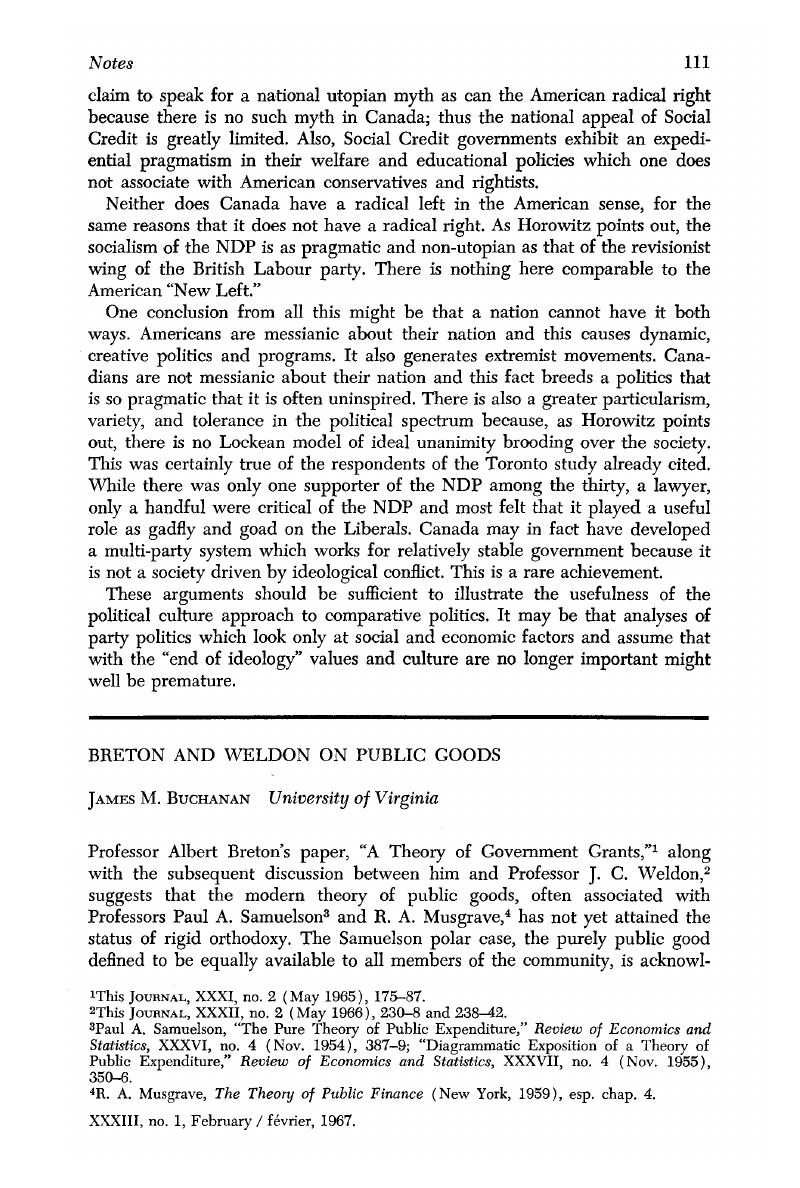Article contents
Breton and Weldon on Public Goods
Published online by Cambridge University Press: 07 November 2014
Abstract

- Type
- Notes
- Information
- Canadian Journal of Economics and Political Science/Revue canadienne de economiques et science politique , Volume 33 , Issue 1 , February 1967 , pp. 111 - 115
- Copyright
- Copyright © Canadian Political Science Association 1967
References
1 This Journal, XXXI, no. 2 (May 1965), 175–87.
2 This Journal, XXXII, no. 2 (May 1966), 230–8 and 238–42.
3 Samuelson, Paul A., “The Pure Theory of Public Expenditure,” Review of Economics and Statistics, XXXVI, no. 4 (11 1954), 387–9CrossRefGoogle Scholar; “Diagrammatic Exposition of a Theory of Public Expenditure,” Review of Economics and Statistics, XXXVII, no. 4 (11 1955), 350–6.Google Scholar
4 Musgrave, R. A., The Theory of Public Finance (New York, 1959), esp. chap. 4.Google Scholar
5 See my “The Theory of Public Finance,” Southern Economic Journal, XXVI (01 1960), 234–8.Google Scholar This is a review article on Musgrave's book.
6 My approach will be fully presented in my forthcoming book, The Demand and Supply of Public Goods, which will, I hope, be published in early 1968.
7 “But it seems to me that at this stage it is not necessary to draw a distinction between production (and possession) and consumption.” (p. 237.)
8 The question of operationality is somewhat different. Conceptually, it would be possible to make the distinction by shifting persons from one location to another and observing their changed evaluations in relation to the measured variations in service flows provided, of course, utility functions could be assumed stable over the process.
9 For further discussion of this analysis, see my “Joint Supply, Externality, and Optimality,” Economica, XXXIII (11 1966), 404–15.Google Scholar
- 4
- Cited by


